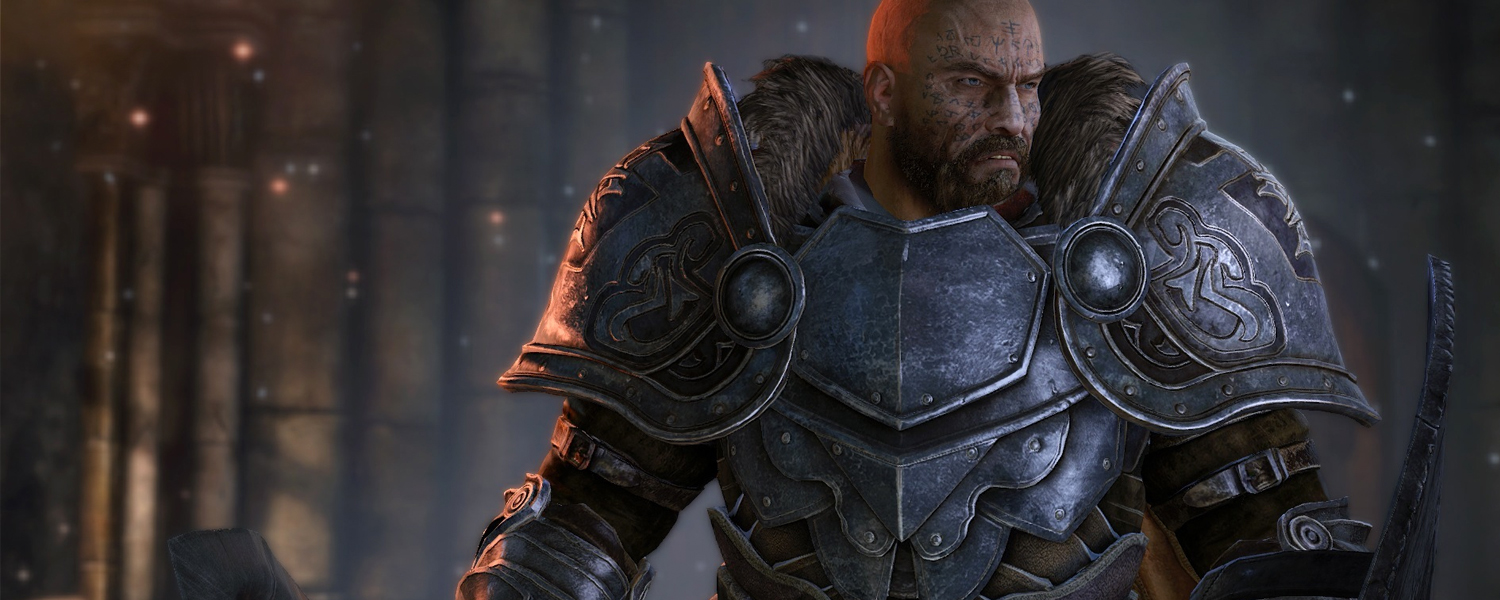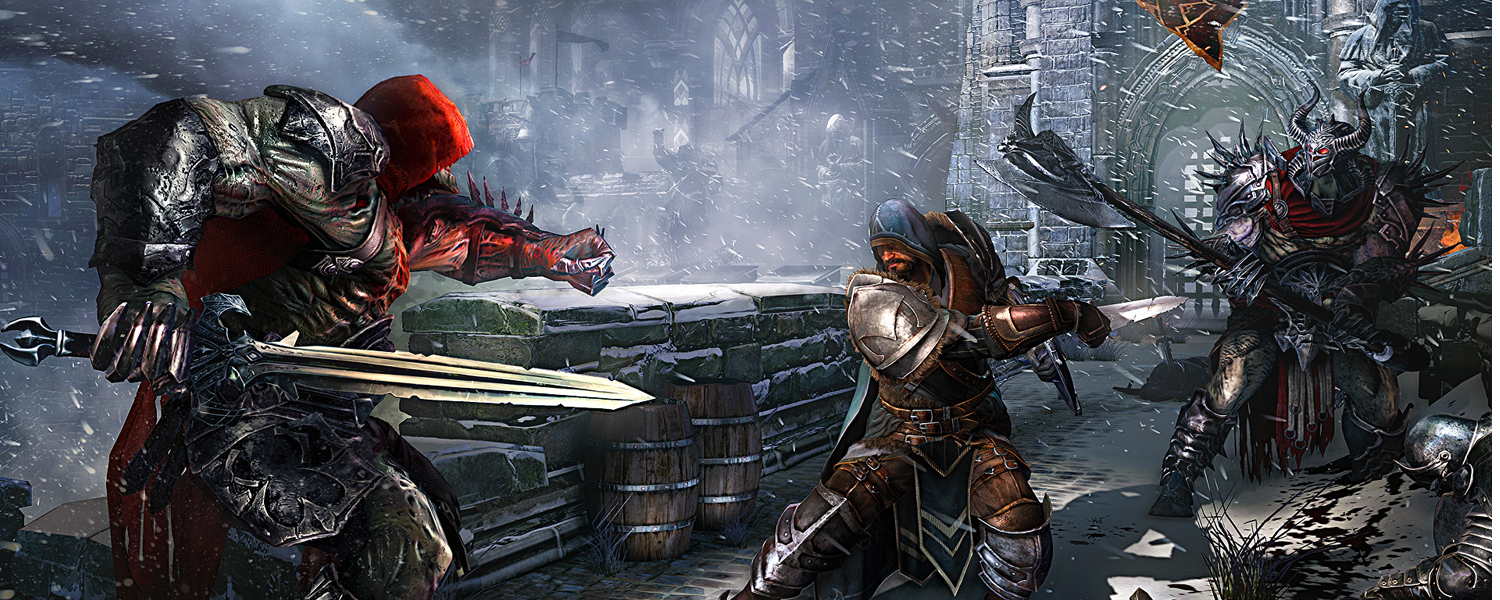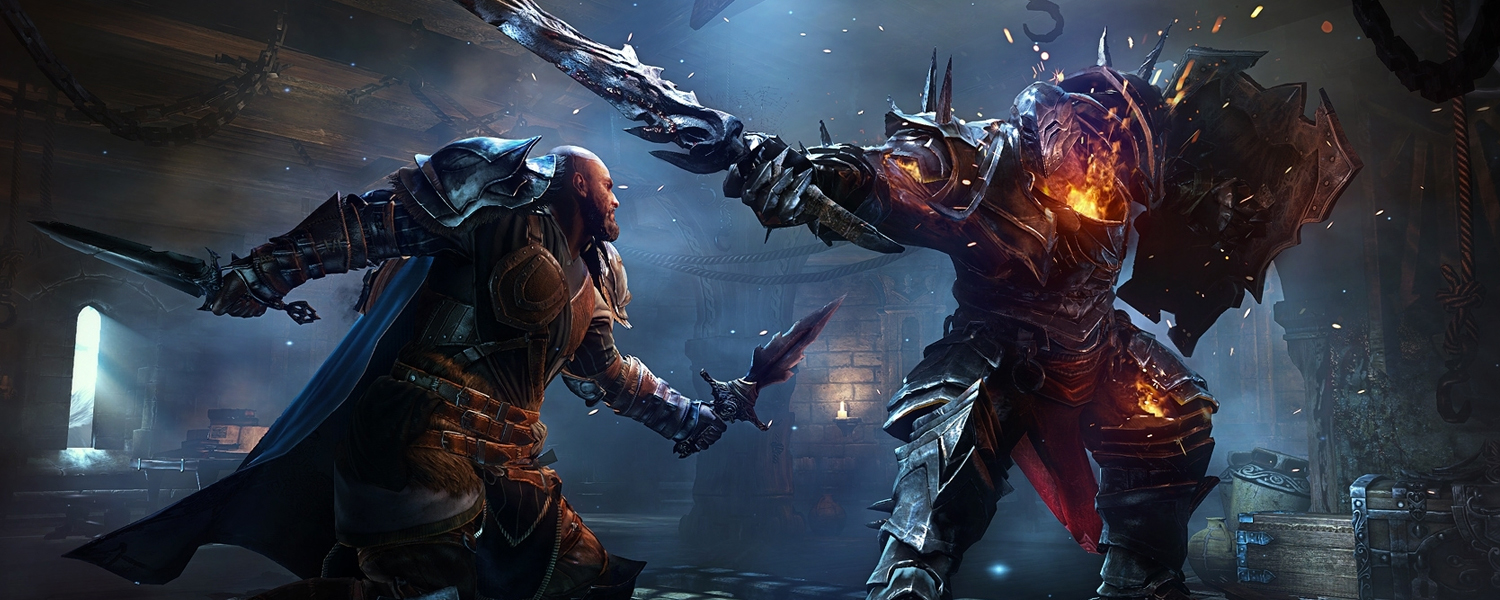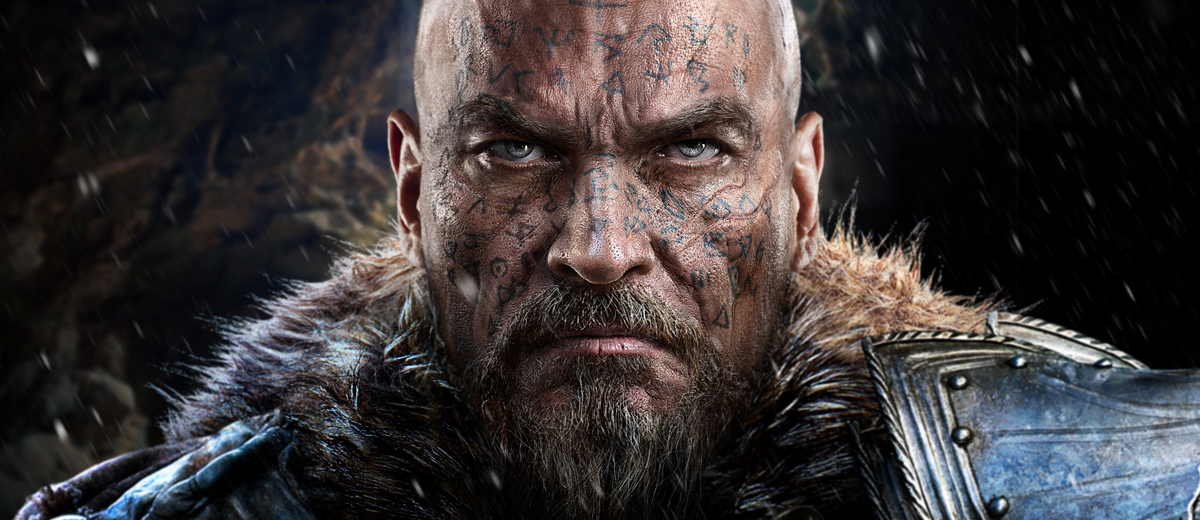

The world is in chaos. The Rhogar are invading from another dimension; sent by a vengeful fallen god seeking to enslave and control humanity, taking over a world where man seeks to banish evil from all humans. In a chance to seek redemption, convicted criminal Harkyn is released from prison by his mentor Kaslo, as the pair seek to stop the invasion and save the realm. Through both their world and the realm of the Rhogar, Harkyn faces innumerable foes of size and strength in order to banish the demons, prevent the enslavement of the human race, and atone for his sins once and for all. CI Games in conjunction with Deck13 Interactive boldly strike out with this new fantasy hack-and-slash game that swings hard and strikes true.

As expected from a game set in a medieval fantasy world, Lords of the Fallen is presented as bleak and dark; a gritty and unrelenting place littered with ruin and chaos. Skies are cloudy and grey, and the only illumination is by fire or the glow of a monster’s eyes, or by the gleaming metal of weaponry and armour. Trees and plants sprout twisted limbs in the air, bereft of life and as grey as the walls and skies above. Some areas are shrouded in mist or smoke that wafts through and obscures, fading as the character approaches. It is not a happy place indeed, and it really sets the tone for the game.
For a game only available on the new generation of consoles (and PC, don’t worry, they didn’t forget you either), there were rare moments where Lords of the Fallen did not feel as polished as it could have been; textures lacked in certain points, characters’ faces did not look as realistic, and even gameplay stuttered. These were rare though, and for the most part the game manages to keep up and provide great visuals throughout.

Accompanying the visuals is a score that borders epic; massive orchestral pieces that rise and fade depending on the situation at hand. This complements the sounds of battle, the clanging of sword on shield and blow after brutal blow, really involving the player and making for a great atmosphere. Harkyn’s tough and gravelly voice suits his character, and the game allows for multiple conversations making use of dialogue trees between certain characters. Scrolls that expose the story on a deeper level are scattered throughout the game, and are read as though they are thoughts being written in a diary. Through this there seems to be a little bit of overacting, otherwise it becomes an interesting way to explore the history of Keystone.

The biggest comparison that can be made about Lords of the Fallen is that it has many striking similarities to From Software’s most recent Dark Souls series, and in some respects that can be understood, but on a deeper level the games are quite different. Lords of the Fallen employs a combat system that relies on an energy bar, similar to Dark Souls, which allows the player to chain attacks depending on the amount of energy they have. The more attacks made, the more Harkyn’s energy is drained, and the less chance there is to defend or evade attacks. Every action has a consequence; whether it is deflecting a blow with a shield, rolling out of the way of an attack, or launching a blow-by-blow assault on the enemy. Energy recharges at a consistent rate, and the more energy the player has, the easier it is to launch assaults on enemies in rapid succession. The only issue that I found with combat tended to be hit detection – often I would run in to an enemy’s attack right at the end and still receive the full brunt of the blow, meaning the difference between life and death.
The game also makes use of weapon and armour classes, each contributing to specific stats. Weapons raise attack stats and use different amounts of energy depending on their type and weight, while armour raises defence and also contributes to weight. Creating the right set of armour to match a weapon is all about playing style – heavier attackers will benefit from increased armour due to limited mobility, while faster players will use lighter armour but smaller and quicker use weaponry. Along the way, Harkyn also gains access to range-based magic weapons which make use of the magic bar, and allow different attacks with a customisable magic gauntlet. The option to wield a weapon with shield, weapon alone or weapon and gauntlet is easily changeable via the press of a button.

As there are three classes that are selectable at the start of the game (cleric, warrior and rogue), there are also sets of spells that accompany these classes which are available for upgrade using XP gained by killing monsters. Choosing the cleric class to begin with, I was given spells such as ‘Prayer’, allowing me to summon a decoy in order to confuse the enemy, ‘Ram’, which sends out a burst of energy towards the enemy, and more which were unlockable after banking XP for spell points. Each class has its benefits and flaws, including differences with speed and protection from the enemy.
Each kill that the player makes adds to a multiplier that increases your XP continuously, and allows you to upgrade powers and attributes along the way. The more kills you get without dying, the higher the multiplier goes, and the easier it is to upgrade. Triggering a save point at one of the game’s many glowing stones resets this multiplier, but allows you to use the XP to obtain spell or attribute points, giving you the chance to upgrade the magic options with the former or strength, speed and the like with the latter. Unlike Dark Souls, save points do not cause all enemies to revive when used; rather, they only revive if the player dies and respawns from a save point. If your character happens to die during gameplay his ghost will appear at the point of death holding your last known experience, and it is up to you to retrieve it. But it will only stay active for a limited time before disappearing, so it is up to you to collect it quickly enough.

Though Lords of the Fallen does not have an adjustable difficulty level, it is not truly needed; unlike the Dark Souls series, the gameplay is not as grueling and punishing toward the player. Effectively this leaves us with a more accessible game and one that isn’t prone to immediate rage-quits due to an inability to defeat a boss. I often found myself employing tactics I hadn’t used in games for a long time – circle-strafing enemies while they threw projectiles, running in to dive-bomb an enemy with a heavy sword strike, and patiently having a stand-off with a heavily-armoured enemy, waiting for the right moment to strike. Enemies begin moving in patterns, to which I would slowly figure out and use to my advantage in order to take them down faster. Sometimes this gamble would pay off and I would strike big, other times, my attack would come too early or too late, and I would receive just punishment for my mistake.
Through this, I continuously found myself wanting to get back into the gameplay more and more, instead of reaching a point of satisfaction and leaving the game alone for a while. Where Dark Souls felt almost like an exercise in masochism, Lords of the Fallen felt akin to a playful waltz with death – being pushed so far only to seize victory from the jaws of defeat and not walk away knowing I would have to do it all again.



